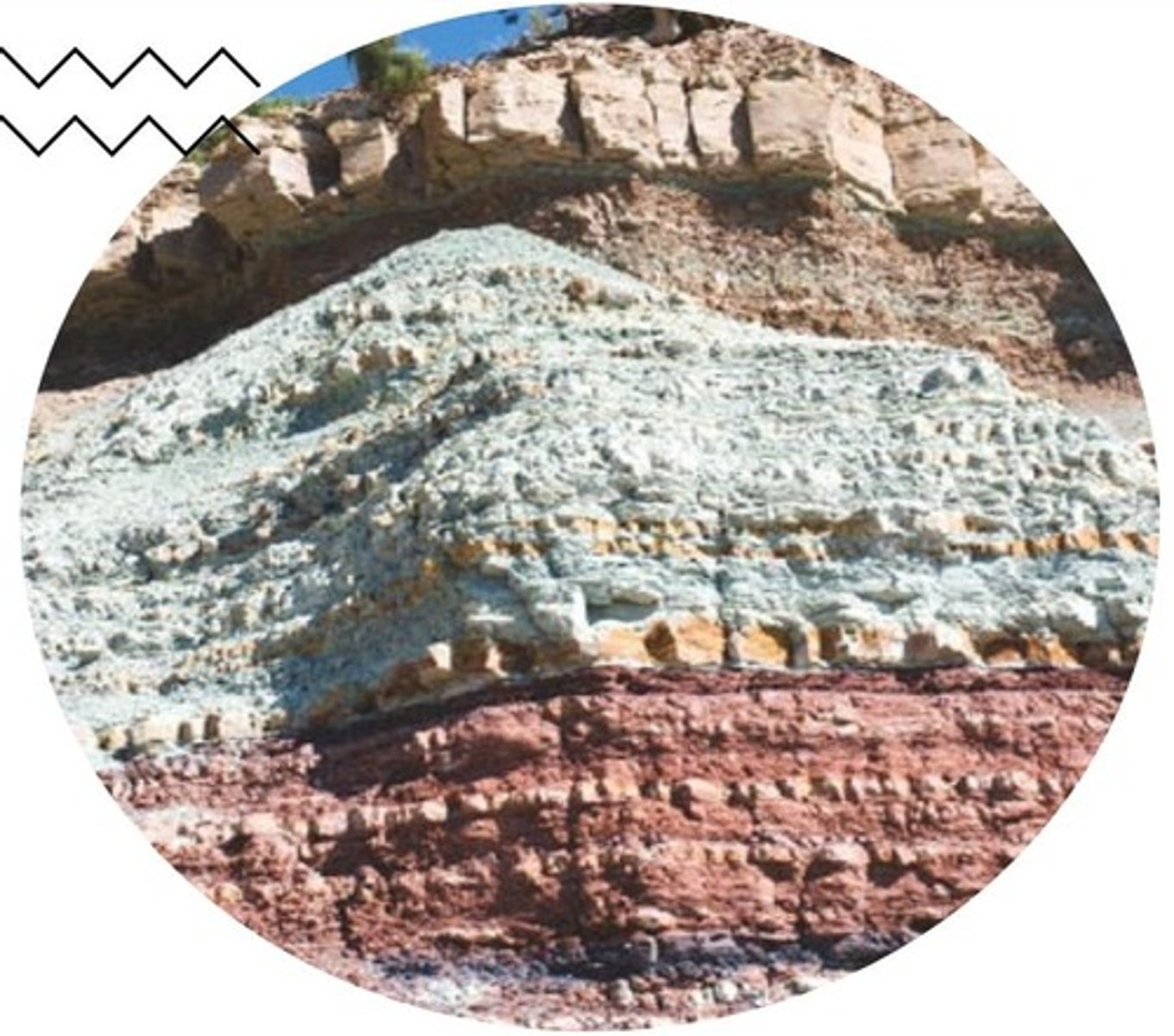Sedimentary Rocks
1/31
There's no tags or description
Looks like no tags are added yet.
Name | Mastery | Learn | Test | Matching | Spaced |
|---|
No study sessions yet.
32 Terms
Sediments
Loose, unconsolidated rock particles and ions (i.e., charged atoms) dissolved in aqueous solutions.
Sedimentary Rocks
Constitute about 75% of all rocks exposed at the surface of the Earth formed when the particles are cemented together or when crystals precipitate from the solutions.
Importance of Sedimentary Rocks (particularly sandstone)
They host petroleum deposits and most of the uranium used for generating nuclear energy.
Types of Sedimentary Rocks
There are three types: Clastic (or detrital), Biochemical, and Chemical.
Clastic Sedimentary Rocks
Constitute more than 75% of the total sedimentary rocks.
Clastic Sedimentary Rocks
These rocks are formed from cemented grains and particles derived from the breakdown of preexisting rocks of any type (e.g., igneous, sedimentary, or metamorphic).
Classification of Clastic Sedimentary Rocks
Based mainly on the size of the grains.
Conglomerate
A clastic sedimentary rock formed by gravel with rounded grains.
Breccia
A clastic sedimentary rock formed by gravel with angular grains.
Gravel
Grains bigger than 2 mm in diameter: granules, pebbles, or boulders.
Sandstone
A clastic sedimentary rock formed by grains between 1/16 and 2 mm in diameter.
Quartz Sandstones
Sandstones formed mostly by grains of the mineral quartz.
Arkoses
Sandstones formed mostly by grains of the mineral feldspar.
Graywackes
Sandstones that include high amounts of fine-grained clay.
Silt
Grains between 1/256 and 1/16 mm in diameter.
Clay
Grains smaller than 1/256 mm in diameter.
Siltstones
Formed from cemented silt grains.
Claystones
Formed from cemented clay grains.
Mudstones
Siltstones and claystones are sometimes collectively called ___.
Shale
A mudstone that easily splits in different layers.

Biochemical Sedimentary Rocks
Formed from the remains of organisms.
Peat
Commonly brown and porous, formed from plant fragments that are still visible.
Bituminous Coal
Black without distinguishable plant remains, formed from plant fragments.
Fossiliferous Limestone
Formed from fossil shells and coral and is the most common biochemical sedimentary rock.
Chemical Sedimentary Rocks
Formed by precipitation from aqueous solutions.
Common Chemical Sedimentary Rocks
Limestone (CaCO3), dolostone (CaMg(CO3)2), chert (SiO2), rock salt (NaCl), and rock gypsum (CaSO4·2H2O).
Limestone
__ is the rock that most commonly is responsible for the development of karst topography.
Chocolate Hills
Made out of limestone, which is a type of sedimentary rock, located in Bohol, Philippines.
Zambales Ophiolite
Consists of igneous, metamorphic, and sedimentary rocks.
Zambales Ophiolite Lithology
Includes peridotite, gabbro, diabasic dike complex, diorite, pillow basalt, pelagic limestone, sandstone, and mudstone.
Zambales Ophiolite Distribution
Occupies the greater part of Zambales province; Mayantoc, Tarlac; Barlo and Sual, Pangasinan.
Zambales Ophiolite Description
An east-dipping complete sequence of oceanic crust and mantle material, located at the western portion of Central Luzon spanning 160 km N-S and 40 km at its widest (E-W) portion.